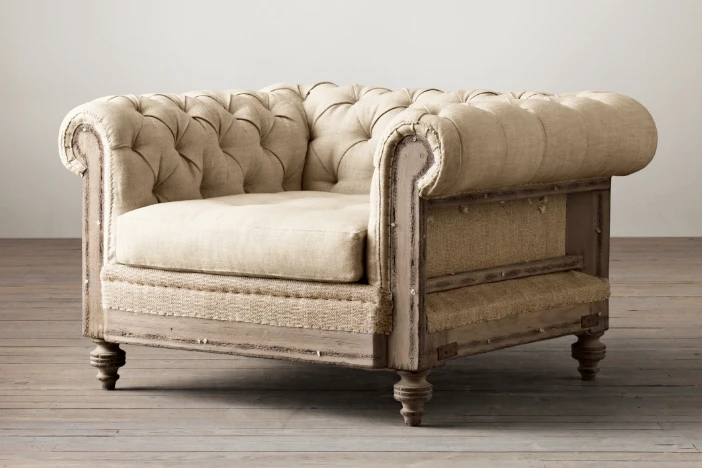
Contrasting sides of shabby chic interior design
Because shabby chic is only about three decades old, it hasn’t had the chance to branch out into subgenres. However, it was formed as the product of other interior designs. Its vintage-refined melting pot is a result of rustic and baroque style combinations. This section of our guide takes a look at these somewhat opposing aesthetics.
Weathered rustic furniture embodies its informal nature
The relaxed, worn and unrefined details of rustic decor play into the comfortable, “shabby” half of shabby chic. This style falls under the umbrella category of rustic. This also encompasses aesthetics like farmhouse, country, cottage and coastal. The term “rustic” elicits mental images of cozy cottages and warm fires, and quite appropriately so. The nature-inspired style focuses on raw materials in both architecture and interior design. It draws from the emotional influences of the romantic movement of the 1800s. Large wooden beams often line the cathedral ceilings of cabins. Stone walls frequently shape cottage homes and lace cotton curtains don the windows of farmhouses. These all embrace the spirit of a rustic house.
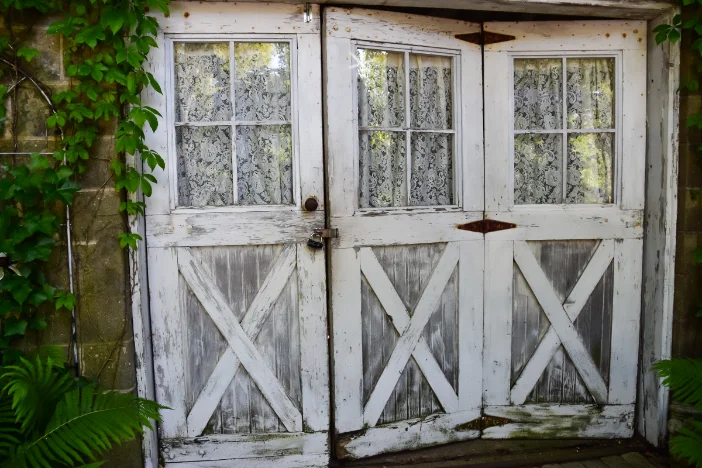
Antique farmhouse vibe grounds shabby chic’s personality
Shabby chic was inspired by large country houses of Europe, so it makes sense it has farmhouse elements. Farmhouse interior design captures the more simplistic side of the style. Shabby chic decor has ornate luxurious details but its worn weathered look provides its true character. However, even its plainer foundation is not quite as modest as that of farmhouse design.
Eclectic country spirit adds to the design’s intrigue
Country style pulls decorating ideas and furniture from flea markets and antique shops. However, it doesn’t have the same lavish details of shabby chic decor. It does include metallic highlights but the shining details serve a more functional purpose rather than just to add character. Country design often hosts these details in light sources, such as bronze wall scones or copper lanterns. The mixing and matching of odds and ends give this aesthetic an eclectic carefree feeling.
A soft English cottage palette creates a welcoming feel
Shabby chic incorporates cozy and comforting cottage elements that give it its quaint and homey feel. Its light and airy vibe mimics the pleasant, subdued pastel colors that are so frequently seen in this decor. Lightweight fabrics such as lace and cotton are seen in both design forms, effectively exuding that warm and welcoming atmosphere. Houzz magazine provides several examples on how to incorporate colors into cottage design.
Shabby chic shares the natural timeworn look of coastal living
Coastal design integrates many of the same weather-worn details of shabby chic. Although, as the name suggests, it resembles a home on the beach rather than a cottage in the country. This design aesthetic is decorated with seashells and oceanic colors such as blue, green and coral. The most prominent similarity between coastal and shabby chic is the lived-in vibe it renders. Both styles feature exposed paint on furniture and worn, antique accents. Coastal design often has open doors, wide windows and skylights. This is similar to the way shabby chic capitalizes on natural elements such as sunlight. HGTV captures the elements of this style in a coastal-inspired design gallery.
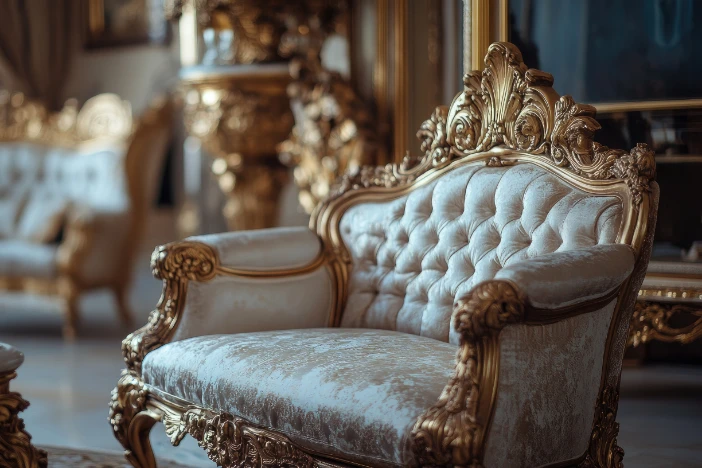
Ornate baroque designs express its elegant character
Draped in intricate details, the Baroque style forms the “chic” part of shabby chic. This elaborate aesthetic is characterized by its heightened levels of opulence and splendor fit for royalty. After all, that’s where this design has its roots. From the late 16th century to early 18th century, Baroque took center stage in European designs. Most notably, Louis XIV’s palace in Versailles embodies the Baroque style. It celebrates rich, deep colors, furniture featuring detailed curves, engravings and marvelously gilded accent pieces.
Baroque architecture takes elements from the Renaissance period, such as colonnades and domes, and makes them grander and more decorated. The drift toward highly ornamental design culminated in the Rococo movement in France in the 1730s. Its theatrical style conveyed movement. This is found in the asymmetrical curves of sculpted molding and intricately carved scallop shells, acanthus leaves and flowers. The dramatic flair is imbued in the legs of tables and chairs to the wrought iron arms of splendid beaded chandeliers.
Baroque pairs with rustic style to create the imperfectly compatible shabby-chic design. Typically, rustic style takes the lead and baroque follows with sophisticated subtlety. Fabulous metallic details may elegantly line pastoral cotton curtains. Dim lights, comparable to a countryside sunset, will sprinkle down from a brilliant crystal chandelier.
Blending styles and pieces for a unifying look
The understated elegance of shabby chic has a relaxed feeling with a nod to past opulence. But how does that idea translate into actual furnishings and decor? The next section of our guide dives into the specific features that are seen in shabby chic environments.

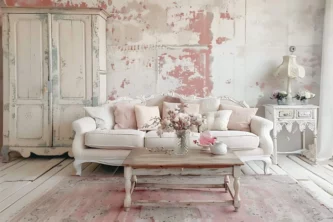
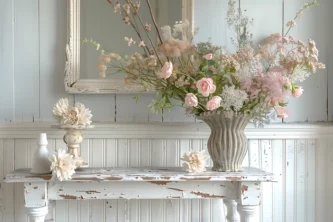
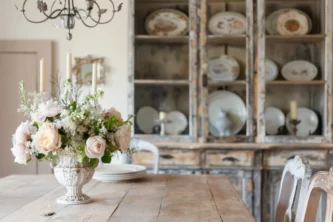




Leave a Reply